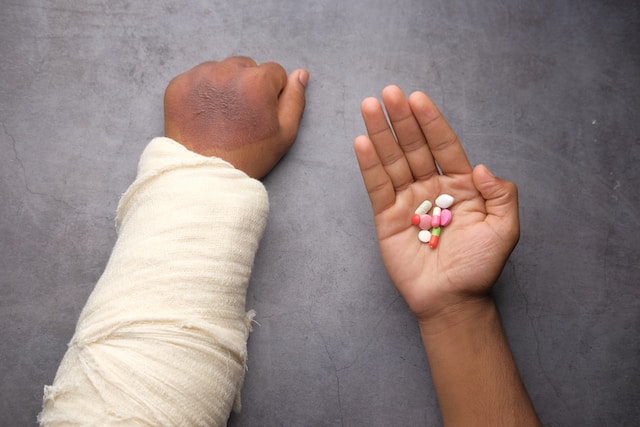Introduction: Recovering from an arm fracture can be a challenging process that requires time, patience, and proper care. Whether you’ve had a cast, surgery, or other treatments for your arm fracture, following the right steps during the healing phase is crucial. In this article, we will provide you with helpful tips to aid your recovery and promote the healing process.
- Follow Medical Advice: Listen to your healthcare provider’s instructions and follow them diligently. They will provide specific guidelines based on the type and severity of your arm fracture. This may include wearing a cast or splint, taking prescribed medications, or attending physical therapy sessions.
- Maintain Immobilization: If your arm is in a cast or splint, make sure to keep it immobilized as advised by your doctor. Avoid removing the cast or engaging in activities that may put stress on the fractured bone. This will help ensure proper alignment and prevent further injury.
- Elevate and Ice: In the initial stages of healing, when swelling is common, elevate your arm above heart level as much as possible. This helps reduce swelling and promotes blood circulation. Additionally, applying ice packs to the affected area for 15-20 minutes at a time can help alleviate pain and swelling.
- Manage Pain: Arm fractures can cause significant pain during the healing process. Take pain medications prescribed by your doctor as directed. Over-the-counter pain relievers may also be recommended, but consult your healthcare provider before taking any additional medications.
- Eat a Nutritious Diet: A healthy diet plays a vital role in the healing process. Consume a balanced diet rich in vitamins and minerals to support bone health and promote tissue repair. Include foods high in calcium, vitamin D, protein, and antioxidants. Consult with a nutritionist or dietitian for personalized dietary recommendations.
- Gentle Exercises: Once your healthcare provider gives you the green light, engage in gentle exercises and rehabilitation as recommended. Physical therapy exercises help restore strength, flexibility, and range of motion in your arm. Follow the exercise plan provided by your therapist and don’t push yourself beyond your limits.
- Gradual Return to Activities: As you progress in your recovery, gradually reintroduce activities that involve the use of your arm. Start with light tasks and gradually increase the intensity and duration. However, avoid activities that put excessive stress on your healing arm or may risk reinjury.
- Practice Good Self-Care: Taking care of your overall well-being during the recovery period is important. Get enough rest, prioritize sleep, and manage stress levels. Maintain good hygiene around your cast or surgical incisions to prevent infection. Stay hydrated and consider incorporating stress-reducing activities, such as meditation or gentle stretching, into your routine.
- Attend Follow-Up Appointments: Regularly attend follow-up appointments with your healthcare provider to monitor the progress of your healing. They can assess the recovery process, make any necessary adjustments to your treatment plan, and provide guidance on when you can resume regular activities.
- Be Patient: Recovering from an arm fracture takes time, and everyone’s healing process is unique. Be patient and avoid rushing the recovery. Allow your body the time it needs to heal properly. If you experience any concerns or setbacks, consult your healthcare provider promptly.
Conclusion: Healing from an arm fracture requires a combination of proper medical care, self-care, and patience. By following the advice of your healthcare provider, practicing self-care, and gradually reintroducing activities, you can support your arm’s healing process and regain functionality. Remember, each person’s recovery journey is different, so stay positive and focused on your progress as you work towards a full recovery.











